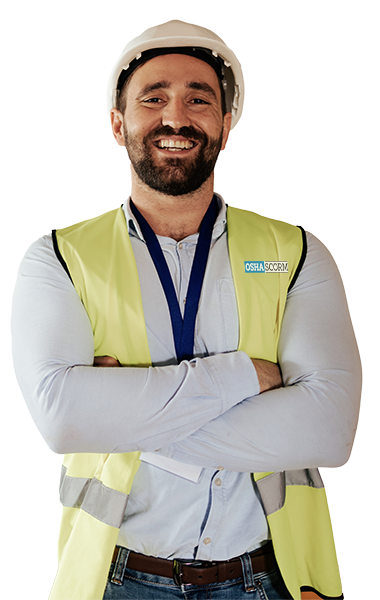OSHA Scaffolding Safety Training
OSHA Scaffolding Safety Training is designed to provide general information and guidelines to employees involved in erecting, disassembling, moving, operating, repairing, maintaining, or inspecting scaffolds in compliance with OSHA’s Scaffolds Standard for the Construction industry as codified in 29 CFR 1926 Subpart L. This course equips workers with the knowledge and skills necessary to perform scaffold-related tasks safely and in compliance with OSHA requirements.
What is Scaffolding?
Scaffolding is a temporary structure used in many industries for performing work operations at elevated levels. While scaffolding is a common method for working at heights, incorrect use, design, or engineering faults can result in worker injuries and fatalities. Common risks include:
- Falls from heights
- Falling objects
- Electrocution
- Collapsed scaffolds
Employer Responsibilities
Employers are responsible for ensuring that all employees working on scaffolds receive training from a qualified person. Training must enable employees to:
- Identify potential hazards associated with the specific type of scaffold being used
- Understand procedures to manage or reduce those hazards
- Use scaffolds safely and in accordance with OSHA regulations
Course Purpose
This training aims to help participants understand the hazards of scaffolding, recognize unsafe conditions, and implement safe work practices. It covers scaffold design, assembly, use, inspection, and maintenance, ensuring a safer workplace for employees performing elevated work operations.
Who Should Enroll?
This course is designed for individuals involved in operations with scaffolding, including:
- Construction workers and laborers working at heights
- Supervisors and foremen overseeing scaffold operations
- Maintenance and renovation workers
- Inspectors and safety officers responsible for scaffold safety
- Health and safety professionals
Why Choose This OSHA Scaffolding Safety Training?
- Ensures compliance with OSHA scaffolding standards (29 CFR 1926 Subpart L)
- Promotes awareness of scaffold hazards and control measures
- Prepares workers to recognize unsafe conditions and prevent accidents
- Reduces risk of injuries, fatalities, and regulatory penalties
- Encourages safer work practices and a culture of compliance on construction sites
What You'll Learn
- Understand OSHA scaffolding standards and requirements
- Identify potential hazards related to scaffold use
- Properly erect, disassemble, move, and maintain scaffolds safely
- Use personal protective equipment (PPE) correctly
- Recognize and respond to unsafe scaffold conditions
- Implement effective inspection and safety procedures
- Ensure compliance with employer scaffold safety programs




